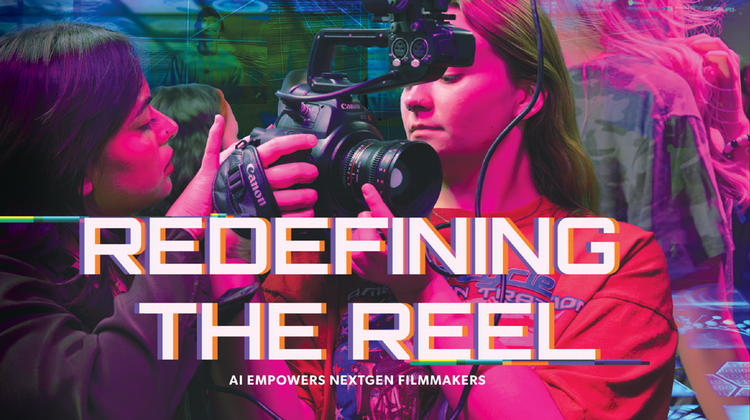IDET Grads, Students in Position to Lead, Innovate During Time of Distance Learning
A seamless transition
TAMU-CC alumna Cary Perales ’18 enrolled in the program while she was in the process of accepting a promotion from science coach to the Director of Instructional Technology for Corpus Christi ISD. Perales said when the pandemic forced school districts like CCISD to focus on a remote learning model, her transition was seamless. “I have to admit I felt very validated because I have been trying to promote future forward-thinking on the integration of technology for about five years now,” she said.
CORPUS CHRISTI, Texas – When the COVID-19 pandemic arrived in Texas in March, the emerging public health crisis required the state’s educational leaders across the spectrum to create a distance learning environment – which in some cases did not exist previously – so that professors and teachers could continue providing instruction safely to students now required by a state order to study from home.
While the situation was one that few could have predicted, it provided an opportunity for graduates and students of the Instructional Design and Educational Technology (IDET) program at Texas A&M University-Corpus Christi to step forward and share their expertise in designing a remote learning environment for teachers and students.
The IDET Master of Science program was created with trainers, instructional designers, e-learning specialists, and teachers in mind. A fully online program since 2014, graduates effectively apply current and emerging technologies to solve learning and performance problems in varied training and school settings. IDET launched at the Island University in 1990 and is one of more than 15 such programs at universities across Texas, according to Dr. Susan Elwood, Associate Professor in the Department of Curriculum, Instruction and Learning Sciences and IDET Program Coordinator. There are 25 students currently enrolled in the IDET program, and the program is also accepting Curriculum & Instruction doctoral students who are seeking an IDET specialization.
“We have a mix of professional backgrounds and future goals related to varying instructional design and educational technology audiences, such as K12, higher ed, health care, and corporate instructional design,” Elwood said. “Designing courses, teaching, and inviting students into collaborative research projects within such a diverse audience is one of the more enjoyable aspects of teaching.”
IDET utilizes flexibility to customize each degree experience, which suited ’18 alumna Cary Perales perfectly. Perales enrolled in the program while she was in the process of accepting a promotion from science coach to the Director of Instructional Technology for Corpus Christi ISD.
“I wanted to make sure I knew I was knowledgeable and up to date in order to lead my team and the district in the right direction,” Perales said. “My degree really helped me explore all the different tools and resources that are available to us to connect globally and differentiate to such a diverse population. I made sure every project and skill I learned through the program I applied at work.”
’08 alumna Nancy Puga is working on her IDET degree while continuing employment as a Teacher-Grade Level Chairperson at Metro Elementary School of Design in Corpus Christi. She plans to graduate in December.
“I chose to pursue an IDET degree because I wanted to explore and learn through research and inquiry how to apply and integrate instructional design concepts, theories, and practices into my own instructional designs for my classrooms as well as future endeavors,” Puga said.
Elwood said the program also offers access to emerging technologies, in addition to web-based tools now used by educators as a result of distance learning.
“IDET students have been working with web conferencing, screen casting, collaborative documents, and learning management systems tools for years. These technologies have recently become of common language and use to the entire world in greater use,” Elwood said.
Alumnus Jeremiah Brauhn graduated from the Island University with an M.S. in IDET in December 2017. Today, he is an Instructional Systems Designer at the Air Force Institute of Technology at Wright-Patterson Air Force Base in Ohio.
“Instructional Design is where the rubber meets the road in many businesses that are trying to transform into more efficient/better workplaces,” Brauhn said.
Brauhn said the program’s use of specific tools proved to be especially helpful in his current role.
“We extensively used Google Drive in the IDET program. This gave me a head start, and I have been leading the way and helping our team stay on the same page by using a shared drive. I am also adept at using the Web Conferencing tools and have been able to organize our meetings, so we don't lose touch even while working remotely,” he said.
Perales said when the pandemic forced school districts like CCISD to focus on a remote learning model, her transition was seamless.
“I have to admit I felt very validated because I have been trying to promote future forward-thinking on the integration of technology for about five years now,” Perales said.
Q: How does the Instructional Design and Educational Technology Program at Texas A&M University-Corpus Christi differ from similar programs offered elsewhere?
A: The IDET program at Texas A&M-Corpus Christi differs from other programs in that it offers a great mix of K-12, higher education, and adult design and training learning environment for interested grad students. IDET at TAMU-CC offers a unique opportunity by partially supporting students with their choice of Adobe Captivate or Articulate Storyline software after completing trials in both programs.
Students also complete the Texas Virtual School Network (TXVSN) Professional Development award and have opportunities to complete certificates in some Google and Adobe Educator programs.

